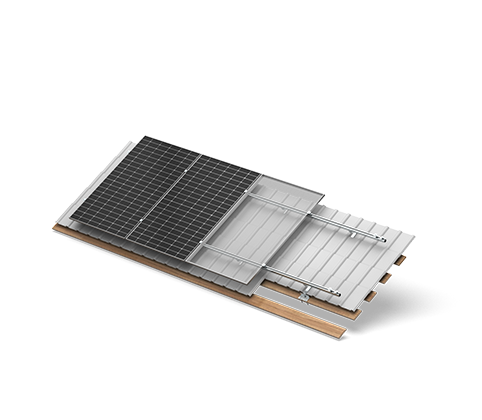Ensuring Stability in Solar Installations on Pitched Tile Roofs
October 28, 2025
Implementing a solar energy system on a pitched tile roof requires careful attention to mechanical stability. The primary challenge is counteracting the natural forces of gravity and weather that can cause mounting systems to shift over time. This potential for movement poses a risk to both the performance of the solar array and the integrity of the roof structure. A secure installation hinges on utilizing a mounting solution specifically engineered to prevent slippage, ensuring the entire system remains fixed in place for its operational lifetime.

Addressing the Core Challenge of System Slippage
The inclined surface of a pitched roof, combined with the often-smooth interface of tiles, creates an environment where components may gradually slide if not properly secured. This risk is amplified by environmental factors such as heavy rain, snow accumulation, or high winds. An effective countermeasure involves a mounting design that establishes a direct and robust connection to the roof’s structural framework, bypassing the tiles themselves. This is typically achieved using specialized hooks that anchor securely to the underlying rafters. This method of attachment transfers the load of the solar array directly to the building’s strongest points, effectively eliminating the risk of downward movement and providing a foundation of long-term stability.
Selecting Components for Long-Term Reliability
The effectiveness of an anti-sliding strategy is contingent on the quality and compatibility of its components. A critical factor is the versatility of the mounting hardware to fit a wide range of tile profiles commonly found on commercial and residential buildings. A comprehensive system will offer a selection of hook designs, each engineered to create a flush and secure connection with specific tile types without requiring modifications that could compromise the roof. Furthermore, the materials used in these components must be selected for superior corrosion resistance. Hardware fabricated from coated or stainless steel is essential to maintain its structural integrity and anti-sliding properties over decades of exposure to the elements, ensuring the installation remains secure.
A successful solar project on a pitched tile roof is fundamentally dependent on a mounting system designed for permanence. The selection of hardware should be guided by its ability to provide a direct structural connection and its compatibility with the existing roof profile. For those evaluating options, attention should be paid to the engineering principles that prevent slippage and the material specifications that guarantee durability. Anti-sliding pitched tile roof solar mounting manufacturers like Antaisolar focus on developing these specialized solutions, providing the necessary components to ensure a secure and lasting installation. The ultimate goal is to achieve a stable energy system that operates reliably without impacting the roof it is mounted upon.

Addressing the Core Challenge of System Slippage
The inclined surface of a pitched roof, combined with the often-smooth interface of tiles, creates an environment where components may gradually slide if not properly secured. This risk is amplified by environmental factors such as heavy rain, snow accumulation, or high winds. An effective countermeasure involves a mounting design that establishes a direct and robust connection to the roof’s structural framework, bypassing the tiles themselves. This is typically achieved using specialized hooks that anchor securely to the underlying rafters. This method of attachment transfers the load of the solar array directly to the building’s strongest points, effectively eliminating the risk of downward movement and providing a foundation of long-term stability.
Selecting Components for Long-Term Reliability
The effectiveness of an anti-sliding strategy is contingent on the quality and compatibility of its components. A critical factor is the versatility of the mounting hardware to fit a wide range of tile profiles commonly found on commercial and residential buildings. A comprehensive system will offer a selection of hook designs, each engineered to create a flush and secure connection with specific tile types without requiring modifications that could compromise the roof. Furthermore, the materials used in these components must be selected for superior corrosion resistance. Hardware fabricated from coated or stainless steel is essential to maintain its structural integrity and anti-sliding properties over decades of exposure to the elements, ensuring the installation remains secure.
A successful solar project on a pitched tile roof is fundamentally dependent on a mounting system designed for permanence. The selection of hardware should be guided by its ability to provide a direct structural connection and its compatibility with the existing roof profile. For those evaluating options, attention should be paid to the engineering principles that prevent slippage and the material specifications that guarantee durability. Anti-sliding pitched tile roof solar mounting manufacturers like Antaisolar focus on developing these specialized solutions, providing the necessary components to ensure a secure and lasting installation. The ultimate goal is to achieve a stable energy system that operates reliably without impacting the roof it is mounted upon.
end
